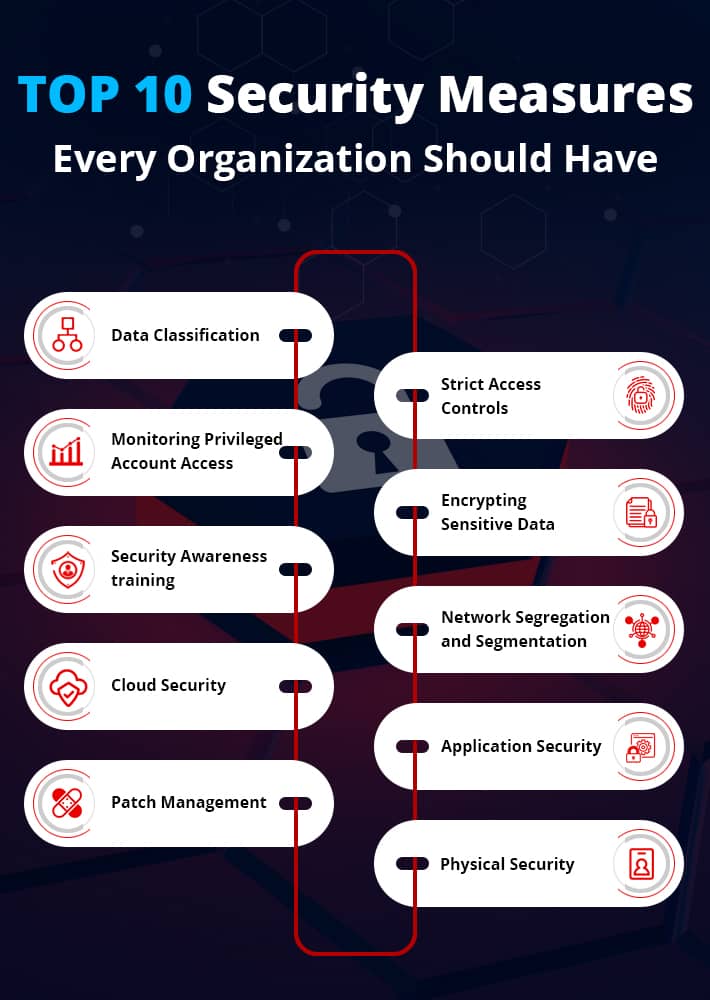Top 10 Data Security Measures Every Organization Should Have

As the threat landscape evolves, organizations must adopt a data/user-centric approach to security. Here are ten essential measures to keep systems secure:
1. Data Classification
- Automated Scanning: Utilize data classification software to automatically scan and classify sensitive data in both on-premise and cloud repositories.
- Pre-defined Taxonomy: Choose a classification system to categorize data types such as PCI and PHI.
2. Strict Access Controls
- Least Privilege Principle: Grant users only the access they need to perform their roles.
- Access Revocation: Remove access rights when they are no longer needed.
- Multi-factor Authentication: Enhance security by requiring multiple forms of verification.
3. Monitoring Privileged Account Access
- Real-Time Alerts: Set up alerts for suspicious activities, such as:
- Accessing privileged accounts outside office hours.
- Using inactive or shared accounts.
- Accessing from unrecognized locations or devices.
- Repeated incorrect login attempts.
4. Encrypting Sensitive Data
- Data at Rest and In Transit: Ensure all sensitive data is encrypted to prevent unauthorized access.
5. Security Awareness Training
- Regular Training: Educate employees on password hygiene and recognizing suspicious communications.
- Phishing Awareness: Train staff to identify and avoid phishing attempts through emails, SMS, and phone calls.
6. Network Segregation and Segmentation
- Isolate Critical Networks: Keep critical networks separate from public access.
- Divide Networks: Segment networks into smaller sub-networks to enhance security and enforce zero-trust principles.

Top 10 Data Security Measures Every Organization Should Have
7. Cloud Security
- Access Controls and Encryption: Implement robust access controls and encrypt sensitive data stored in the cloud.
- Security Settings: Regularly review and update security settings and agreements with cloud service providers.
8. Application Security
- Patch Vulnerabilities: Regularly update and patch applications to fix vulnerabilities.
- Secure Web Forms: Ensure web forms are properly sanitized to prevent SQL injection attacks.
- Cryptographic Failures: Address broken access control and cryptographic issues.
9. Patch Management
- Automated Solutions: Use automated patch management tools to ensure timely updates of all systems and applications.
10. Physical Security
- Secure Server Rooms and Workstations: Implement physical security measures such as locks, alarms, ID badges, and CCTV to prevent unauthorized access.
Implementing these measures helps organizations protect their data, reduce risks, and ensure compliance with security standards.

